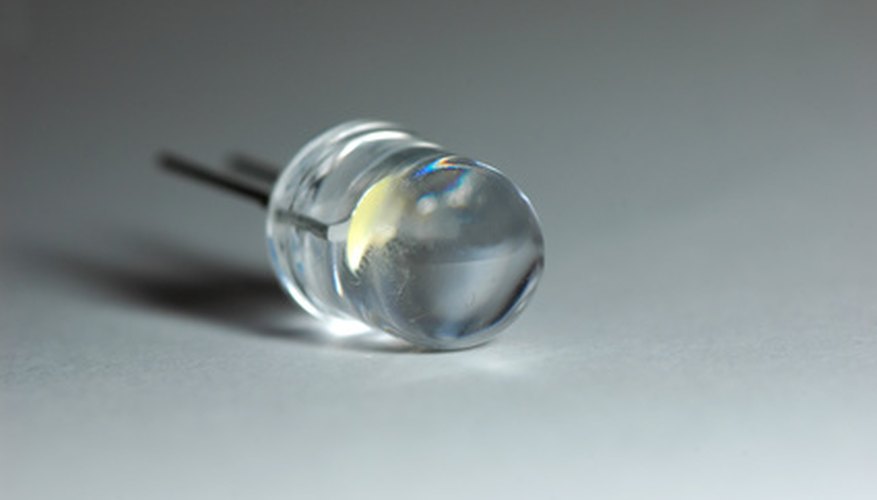Flashlights not only come in all shapes and sizes, but are equipped with different types of light--each with its own specific advantages and disadvantages. Light emitting diode (LED) and krypton flashlights are two popular options on the market today, and the technology behind each is very different. Weighing the strong points and drawbacks of krypton and LED will help you choose the type of flashlight that best suits your needs.
Technology
Comparing the science behind krypton and LED flashlight technology is an essential first step in understanding the specific advantages of each. Krypton is listed on the periodic table of elements as a noble gas. Krypton bulbs are filled with the gas and contain a filament, and produce a high-output light. LEDs are not bulbs at all--they are semiconductors that convert electricity into light within a transparent block of material (solid-state technology).
- Comparing the science behind krypton and LED flashlight technology is an essential first step in understanding the specific advantages of each.
- Krypton bulbs are filled with the gas and contain a filament, and produce a high-output light.
Light Features
LED flashlights emit a high-output white to bluish-white light, although many coloured varieties exist. Krypton bulb flashlights produce a light which tends to be more yellow, or "warmer" in colour than that of LEDs. According to Bright Guy Inc., the light from LED flashlights often appears brighter to the eye than that of a krypton, yet this is due to the whiter colour of LED light and the presence of reflectors within the flashlight, which help concentrate the beam. However, krypton flashlights have a higher level of lumens (light output) and do function better than LEDs for concentrating beams of light on an area.
- LED flashlights emit a high-output white to bluish-white light, although many coloured varieties exist.
- However, krypton flashlights have a higher level of lumens (light output) and do function better than LEDs for concentrating beams of light on an area.
Energy Efficiency
When it comes to battery life, LEDs have a definite advantage over krypton flashlights--LEDs are three to four times more energy efficient than krypton and other filament-based bulbs, according to Duke University research. However, krypton flashlights--with their higher light output--aren't exactly known as energy hogs. According to eLightSpot.com, krypton lights are still more efficient than traditional, halogen-filled bulbs, since they do not produce as much heat.
Durability
Another area in which LED technology wins the day over krypton is in the durability of the flashlights. Since LEDs are simply clear, solid semiconductor diodes, they are nearly immune to burning out when the flashlight is dropped or otherwise subjected to high impact. By nature, krypton bulbs are more fragile--although rubberised or metal-armoured flashlight models using krypton light can minimise the risk of broken filaments or bulbs. Still, krypton bulbs can and will eventually burn out and need to be replaced, while solid-state LEDs do not burn out and--barring manufacturer defect--do not ever need to be replaced.
- Another area in which LED technology wins the day over krypton is in the durability of the flashlights.
- By nature, krypton bulbs are more fragile--although rubberised or metal-armoured flashlight models using krypton light can minimise the risk of broken filaments or bulbs.
Cost
Krypton flashlights, although less energy efficient than LEDs, are less expensive than their solid-state counterparts. A price comparison of LED vs. krypton flashlights of similar size and functionality--from popular brands such as Maglite and Brinkmann--reveals that you can expect to pay roughly 40 per cent more for the LED models. Still, you'll have to weigh the initial investment of the flashlight itself against the future cost of batteries when deciding on an LED or a krypton flashlight.
